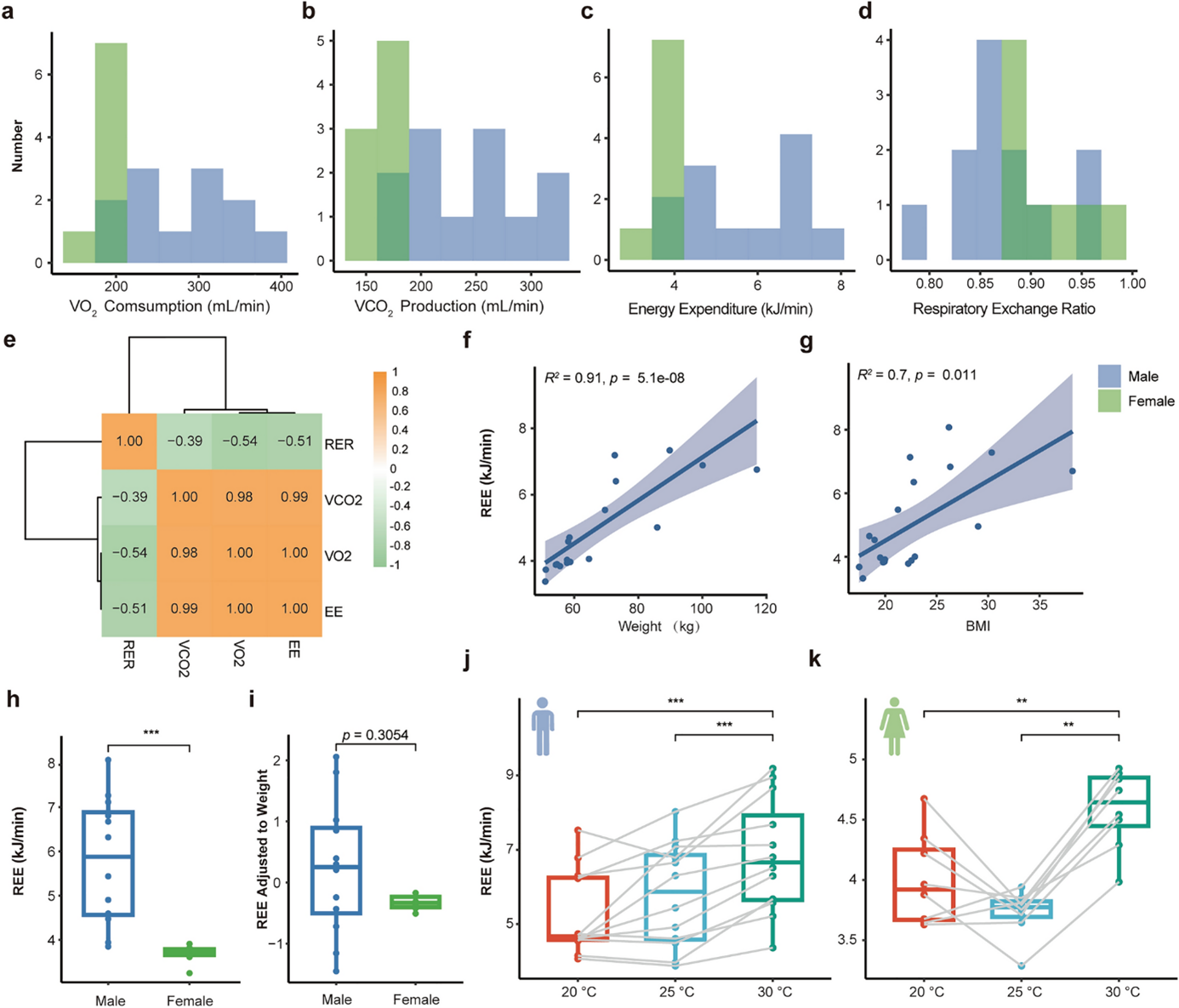Energy expenditure (EE) is a critical aspect of our physiological processes, reflecting the intricate balance of metabolic activities. In recent developments, researchers from the Human Phenome Institute at Fudan University have introduced a protocol for measuring EE using a whole-room calorimeter, a method detailed in a comprehensive study published in Phenomics.
Introduction
Understanding energy expenditure is fundamental to comprehending how our bodies manage and utilize energy. Factors such as sex, age, muscle volume, fat volume, and even environmental conditions like temperature can significantly impact EE. Accurate measurement of EE is vital for exploring these dynamics, especially in large population cohorts. The study by researchers from the Human Phenome Institute aims to standardize the procedure for EE measurement, thereby enhancing the comparability of data across various studies. This protocol is particularly relevant for the Human Phenome Atlas, which seeks to compile a comprehensive dataset of metabolic status indicators.
Methods
The study outlines four primary methods for assessing energy expenditure: doubly labeled water, direct calorimetry, the Fick method, and indirect calorimetry. Among these, indirect calorimetry stands out for its non-invasive nature and cost-effectiveness, making it the preferred choice for this research.
Methanol Burning Validation
To ensure the accuracy of the whole-room calorimeter, a methanol burning test was conducted. This process involved:
- Assembling a wick and placing it in a methanol bottle.
- Igniting the wick and allowing it to burn for an extended period.
- Recording the combustion data to calculate the theoretical VCO2 production rate.
- Comparing the theoretical values with practical readings to validate the system’s reliability.
Measurement of Resting Energy Expenditure (REE)
Resting energy expenditure was measured in a controlled environment set at 24°C with 57% relative humidity. Volunteers were instructed to rest inside the chamber, with measurements taken once stable readings were achieved. This procedure was repeated at various temperatures (20°C, 25°C, and 30°C) to assess how ambient temperature influences EE.
Measurement of Exercise-Related Activity Thermogenesis (EAT)
Exercise-related activity thermogenesis was measured by having volunteers perform pedal exercises inside the chamber. The metabolic transition from resting to exercise state was observed, and measurements were taken after the readings stabilized. The procedure was repeated at different temperatures to evaluate the impact of environmental conditions on EAT.
Results
The methanol burning test showed minimal variation between theoretical and practical values, confirming the system’s accuracy. The study included 20 volunteers, and their basic characteristics were recorded. Key findings include:
- Correlation with Physiological Factors: Significant correlations were observed between REE and factors such as weight, BMI, and sex. Adjusting for weight rendered the sexual differences in energy expenditure non-significant, highlighting the role of body size.
- Impact of Temperature: Shifts to lower temperatures (20°C) did not significantly impact the respiratory exchange ratio (RER), while higher temperatures (30°C) increased RER in both males and females.
- EAT Measurements: Exercise-related activity thermogenesis displayed similar correlations with weight and BMI as REE. Ambient temperature did not significantly affect EAT.

This figure illustrates the resting energy expenditure (REE) measurements of the subjects.
- Panels a-d: These panels show the distribution of various metabolic parameters among the volunteers at rest. Panel (a) depicts oxygen consumption, panel (b) shows carbon dioxide production, panel (c) illustrates energy expenditure, and panel (d) displays the exchange rate of oxygen and carbon dioxide. Different colors in these panels represent different genders, while the height of the y-axis indicates the number of volunteers.
- Panel e: This panel presents a heatmap that displays the correlations between oxygen consumption, carbon dioxide production, energy expenditure, and the exchange rate of oxygen and carbon dioxide.
- Panels f and g: These scatter plots, with fitted regression lines and 95% confidence interval bands, show the positive linear relationships between REE and weight (panel f) and REE and BMI (panel g).
- Panels h and i: These panels provide a differential analysis of REE between males and females. Panel (h) shows the unadjusted REE, while panel (i) shows REE adjusted for weight.
- Panels j and k: These box plots illustrate the changes in REE due to temperature differences in males (panel j) and females (panel k). Statistical significance is indicated as follows: *p < 0.05; **p < 0.01; ***p < 0.001.
Conclusion
This study successfully standardized the procedure for measuring energy expenditure using a whole-room calorimeter, providing a reliable method for metabolic research. The protocol’s implementation is expected to enhance data comparability in the Human Phenome Atlas and other metabolism-related studies. By understanding the intricate factors influencing EE, researchers can gain valuable insights into metabolic health and disease, paving the way for more targeted and effective interventions.
The innovative approach to measuring EE by the research team from the Human Phenome Institute at Fudan University represents a significant advancement in the field of metabolic research, offering a robust framework for future studies. As we continue to explore the complexities of energy metabolism, standardized methods like these will be crucial in driving scientific discovery and improving health outcomes.
Related products
Whole body room calorimeters
The Room Calorimeter, used in numerous research studies, is spotlighted for its unparalleled accuracy and reproducibility in measuring energy expenditure in various contexts. This tool is vital for generating reliable data in studies exploring energy expenditure during various activities, from 24-hour energy expenditure evaluations to high-intensity exercise testing.
How can we help you with your research?
Maastricht Instruments creates equipment in the field for indirect calorimetry measurements. We provide support for studies, research and measurements alongside our indirect calorimetry products. Consult us about our indirect calorimetry metabolic cart, whole room calorimeter systems or accelerometry add-ons. Please contact us or find more information on our information pages.
References
Zhou, G., Bao, K., Xiao, H., Ge, Y., Kong, X., & Liu, T. (2024). Measurement of Energy Expenditure by Indirect Calorimetry with a Whole-Room Calorimeter. Phenomics, 4:203–212. DOI: 10.1007/s43657-023-00127-9.
